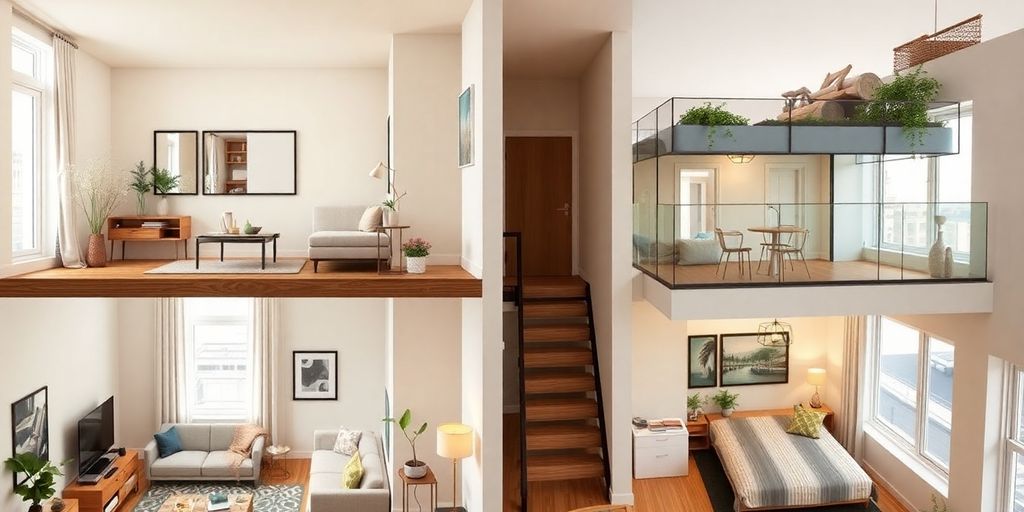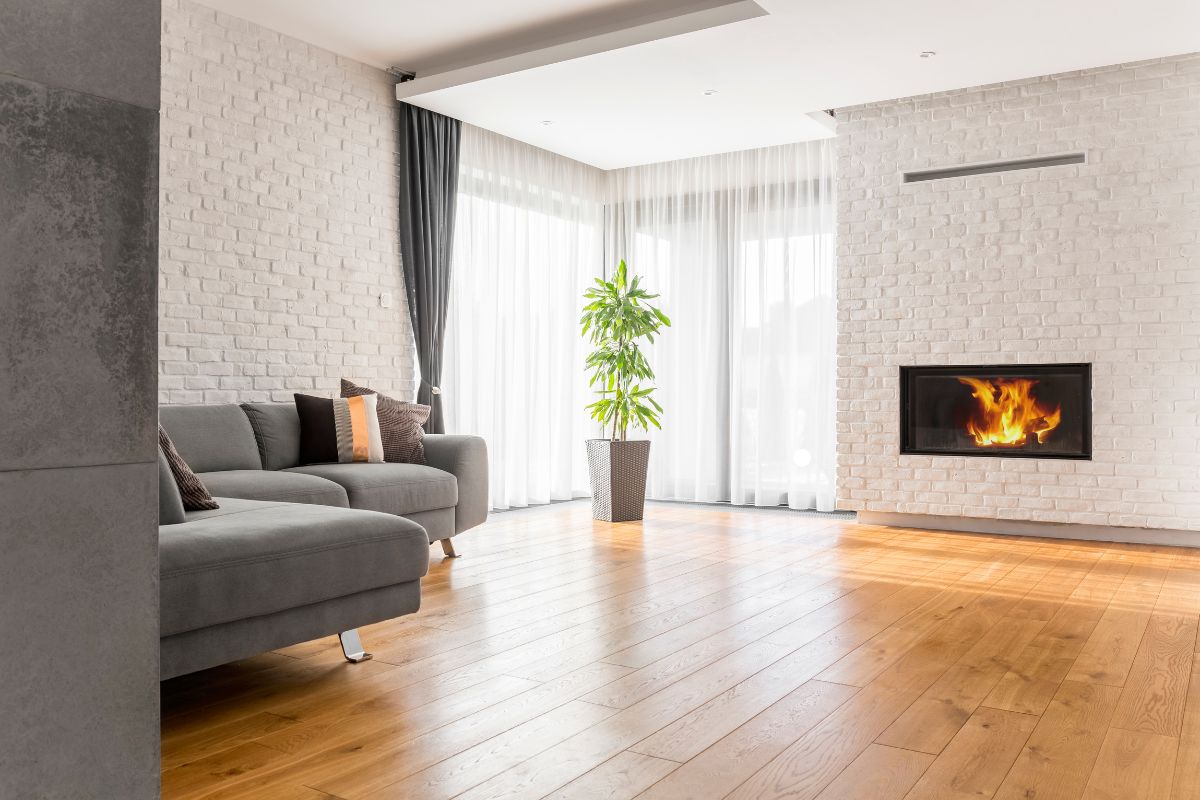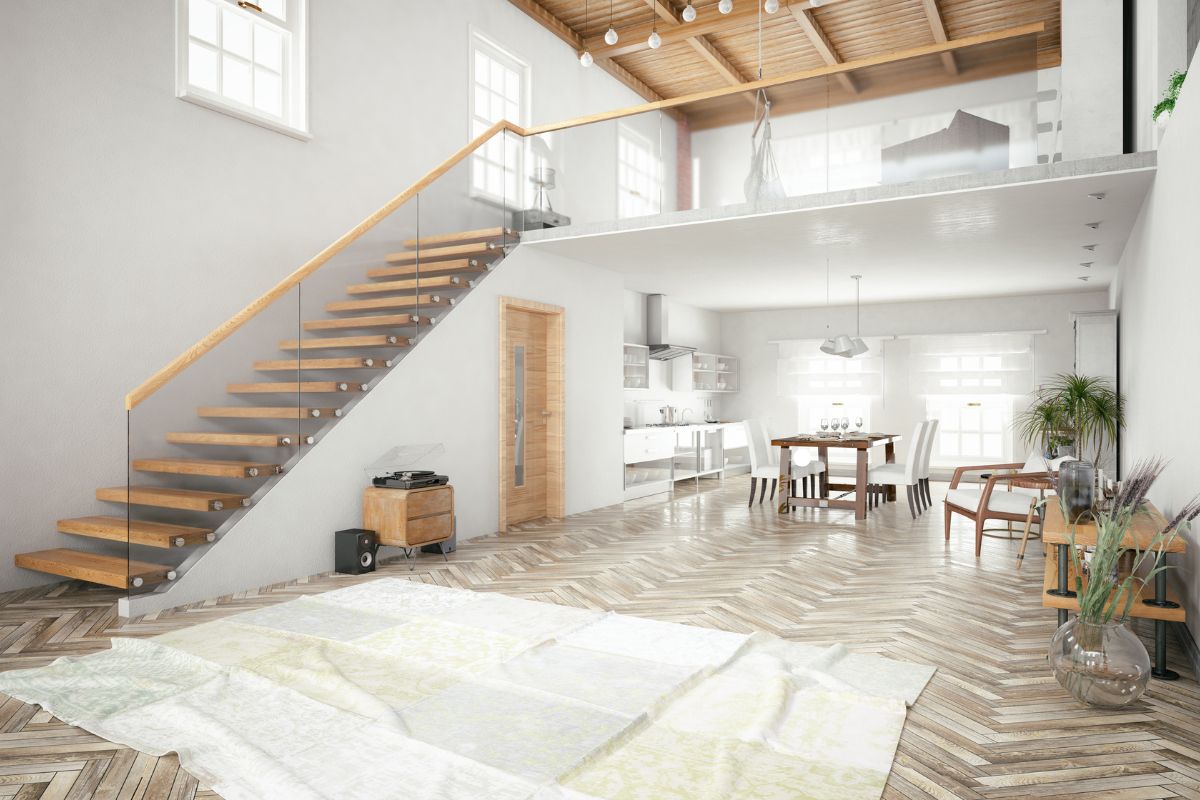
When you’re deciding on an apartment in a three-story building, the floor you choose can make a big difference in your day-to-day life. Each level has its own perks and drawbacks that could affect your comfort, costs, and even your lifestyle. So, which floor is best in a 3 floor apartment? Let’s break it down and explore the pros and cons of each option to help you make the right choice.
Key Takeaways
- Ground floors are convenient and often come with outdoor access, but they may lack privacy.
- Second floors strike a balance between noise levels and temperature control.
- Top floors offer great views and quiet living, but can get hotter in summer.
- Consider factors like noise, energy costs, and accessibility when choosing.
- Natural light and ventilation vary significantly depending on the floor.
Advantages of Living on the Ground Floor
Convenience and Accessibility for All Residents
Living on the ground floor means no stairs or elevators to deal with—perfect for families with young kids, seniors, or anyone with mobility challenges. It’s the easiest option for carrying groceries, furniture, or anything bulky. Plus, if you’re always on the go, the quick in-and-out access can save you time every day.
Enhanced Outdoor Space and Garden Access
Ground-floor apartments often come with a patio, garden, or even a small yard. This outdoor space is like an extension of your home, giving you room for gardening, outdoor dining, or just relaxing in the fresh air. If you have kids or pets, this space can be a lifesaver for playtime. Ground-floor units also make it simpler to step outside and enjoy the outdoors whenever you want.
Energy Efficiency and Temperature Regulation
One surprising perk of ground-floor living is the natural temperature regulation. These units tend to stay cooler in the summer because they’re shaded by the floors above. In winter, they’re often warmer since heat rises from below. This can mean lower energy bills and a more comfortable living environment. If you’re eco-conscious or just want to save some cash, the ground floor has some clear advantages.
Ground-floor apartments are all about accessibility, practicality, and direct outdoor connections—they’re a great choice if you value convenience and simplicity.
Additionally, choosing the right flooring, such as hardwood flooring, can greatly impact the comfort and aesthetics of your apartment. Learn more about the benefits of hardwood flooring.
Why the Second Floor Offers a Balanced Lifestyle
Reduced Noise Compared to Ground Floor
Living on the second floor often means less noise from street traffic or shared common areas like lobbies. Unlike the ground floor, where you might hear every footstep or car passing by, the second floor provides a more buffered experience. This makes it a sweet spot for those who want a quieter environment without the isolation of the top floor.
Optimal Privacy Without the Top Floor Heat
The second floor strikes a great balance between privacy and comfort. You’re high enough to avoid the prying eyes of passersby but not so high that you’re battling the intense heat that can accumulate on the top floor during summer. Plus, you’re less likely to deal with rooftop maintenance noise.
Convenient Access to Shared Amenities
Being on the second floor means you’re just a quick trip down to shared spaces like laundry rooms or mailboxes. You’re not stuck waiting for an elevator as often as top-floor residents might be, and stairs are manageable for most people. It’s especially handy for those who value both convenience and a bit of exercise.
When choosing an apartment in a three-story building, each floor has its own pros and cons affecting comfort, cost, and lifestyle. Need help deciding? Call us today for expert advice and find the perfect floor for your needs!
Top Floor Living: A Quiet and Scenic Retreat

Unobstructed Views and Natural Light
Living on the top floor often means enjoying stunning, panoramic views that lower floors simply can’t offer. Whether it’s the city skyline, a lush park, or even just the open sky, these views can make your home feel like a peaceful escape. Plus, with no buildings towering above, you’ll likely get more natural light flooding your space, making it feel brighter and more inviting.
Minimal Noise from Neighbours Above
One of the biggest perks of top-floor living is the lack of upstairs neighbours. No more worrying about footsteps, dropped items, or furniture being dragged across the floor at odd hours. This alone can make the top floor an ideal choice for those who value peace and quiet.
Enhanced Security and Privacy
Being higher up naturally adds a layer of security. It’s less likely for someone to easily access your windows or balcony. Additionally, the elevation gives a sense of privacy that’s harder to achieve on lower floors. You won’t have to deal with people walking by your windows or peeking into your space.
Living on the top floor combines tranquillity and beauty, creating a space where you can truly unwind after a long day.
Additionally, choosing the right flooring, such as carpet tile flooring, can greatly enhance the comfort and aesthetics of your apartment. Learn more about the benefits of carpet tile flooring.
Factors to Consider When Choosing Your Apartment Floor
Impact of Noise Levels on Daily Life
Noise can be a deal breaker for many people. Ground floors often face street noise, especially in busy neighbourhoods. Second floors strike a balance, offering some insulation from street-level sounds but still being close enough to hear neighbours above. Top floors, on the other hand, are usually the quietest, as there’s no one stomping around above you. Think about how much noise you can tolerate before deciding.
Accessibility for Families and Seniors
If mobility is a concern, the ground floor is the most accessible option. Families with young kids or seniors will appreciate avoiding stairs or elevators. Second floors are manageable but may still pose challenges for those with strollers or limited mobility. Top floors, while offering perks, can be inconvenient for those who need quick and easy access.
Energy Costs and Temperature Control
Energy efficiency varies by floor. Ground floors tend to stay cooler in the summer, which can cut down on air conditioning costs. However, they might be colder in winter. Second floors offer more balanced temperature regulation year-round. Top floors can get hot during summer months, leading to higher cooling bills, though they might be cozier in winter.
Your choice of floor impacts everything from your comfort to your monthly utility bills. Take a moment to weigh the pros and cons before signing that lease.
How Floor Choice Affects Your Apartment Experience
Privacy and Interaction with Neighbours
Living on different floors impacts how much privacy you have and how often you interact with neighbours. Lower floors, for instance, tend to have more foot traffic, which means you might hear more noise or have more casual encounters with people passing by. On the other hand, upper floors usually offer more seclusion, making them ideal for those who value their personal space. If privacy is a top concern, consider that lower floors may experience more noise and reduced privacy due to their proximity to common areas.
Safety and Emergency Considerations
Safety is another factor that influenced by your floor choice. Ground floors are generally easier to access, which might be a concern for security-minded individuals. However, they also offer the quickest escape route in case of emergencies like fires. Upper floors, while more secure from break-ins, might pose challenges during evacuations. Think about what’s more important to you—quick access or added security.
Lifestyle Preferences and Daily Routines
Your daily habits and lifestyle can also determine which floor suits you best. For example, if you’re someone who enjoys quick access to the outdoors, the ground floor might be ideal. Conversely, if you prefer a quieter atmosphere and don’t mind using the stairs or elevator, the top floor could be your haven. Ultimately, your floor choice should align with how you live day-to-day and what conveniences matter most to you.
Your choice of floor isn’t just about views or convenience—it shapes your entire living experience, from how often you see your neighbors to how you handle emergencies. Take the time to weigh what matters most to you.
The Role of Natural Light and Ventilation on Each Floor

Ground Floor Shading and Cooling Benefits
Living on the ground floor often means enjoying naturally cooler temperatures during hot months. Thanks to the surrounding greenery or nearby structures, the ground floor tends to be shaded, which keeps the interiors cooler and reduces the need for air conditioning. This makes it a great choice for those looking to save on energy costs. However, the downside is that direct sunlight may be limited, which can result in a dimmer living space. To counter this, strategically placed windows and lighter interior colours can help reflect and amplify the available light.
Second Floor’s Balanced Light Exposure
The second floor hits a sweet spot when it comes to natural light and ventilation. It avoids the heavy shading of the ground floor while not being overly exposed like the top floor. Windows on this level often benefit from cross ventilation, especially if placed on opposite walls, promoting a steady flow of fresh air. This setup can significantly improve indoor air quality, as highlighted in effective indoor environment quality in homes. For many, this balance makes the second floor an appealing choice.
Top Floor’s Abundance of Sunlight
If you love waking up to bright, sunlit mornings, the top floor is where you’ll want to be. With no obstructions above, this level gets the most sunlight throughout the day. This is ideal for those who enjoy natural lighting or have indoor plants that thrive in such conditions. On the flip side, the top floor can get quite warm, especially in summer. Proper insulation and the use of ceiling fans or air conditioning can help mitigate this issue. Additionally, the higher elevation often ensures excellent ventilation, making it feel breezy and fresh.
Understanding the Resale Value of Different Floors
Market Demand for Specific Floor Levels
When it comes to resale value, different floors attract different types of buyers. Top-floor apartments often command a premium due to their privacy, views, and reduced noise. On the other hand, ground-floor units appeal to families and seniors because of their accessibility. Second-floor apartments tend to strike a balance, attracting buyers who want a mix of convenience and privacy.
Impact of Floor Features on Property Value
The features associated with each floor can significantly influence its resale price. For instance:
- Ground floor: May include garden access or a private patio, boosting its value.
- Second floor: Offers moderate noise levels and is often seen as a “safe choice.”
- Top floor: Known for panoramic views and maximum sunlight, which are major selling points.
Upgrade your space with top-quality flooring! From hardwood to tiles, we offer expert installation and unbeatable prices. Get a free consultation today and transform your home or office. Call now or book online!
Long-Term Investment Considerations
Investors should think about how the floor level aligns with future market trends. While top-floor units may be pricier upfront, their unique features often make them more desirable in the long run. Ground-floor apartments might see steady demand due to their practicality, while second-floor units could remain a reliable middle-ground option.
Choosing the right floor isn’t just about personal preference—it’s a decision that can impact your financial future. Carefully consider what buyers in your area value most before making a choice.
Choosing the right floor in a three-story apartment really depends on what matters most to you. The ground floor is all about easy access and convenience, but it might come with more noise. The middle floor strikes a balance, offering a mix of accessibility and reduced foot traffic. Then there’s the top floor, which gives you the best views and the most privacy, though it might mean more stairs or waiting for the elevator. At the end of the day, it’s about figuring out what fits your lifestyle and priorities. There’s no one-size-fits-all answer, so take your time and weigh the pros and cons before deciding.
Frequently Asked Questions
What are the benefits of living on the ground floor?
Ground floor apartments are great for easy access, especially for families with kids or seniors. They often come with outdoor spaces like gardens or patios, and they stay cooler in summer, saving on electricity.
Why might someone choose the second floor in a three-story building?
The second floor offers a middle ground. It’s quieter than the ground floor, avoids the heat issues of the top floor, and still provides good privacy and easy access to amenities.
What makes the top floor appealing to residents?
Top floor apartments are peaceful since there are no neighbours above you. They often have better views, more sunlight, and added privacy, making them feel like a retreat.
How does natural light differ across the three floors?
Ground floors get shade, which keeps them cooler but darker. Second floors have balanced light, while top floors enjoy the most sunlight, making them bright and airy.
Does the floor level affect the resale value of an apartment?
Yes, resale value can vary. Top floors might be pricier due to views and privacy, while ground floors appeal to families and seniors. Market demand also plays a big role.
What should I consider when picking a floor in an apartment?
Think about your lifestyle. Noise, privacy, energy costs, and accessibility for kids or seniors are important. Each floor has its own pros and cons to weigh.
Upgrade your space with top-quality flooring! From hardwood to vinyl, we offer expert installation at unbeatable prices. Contact us today for a free consultation and transform your floors effortlessly!

